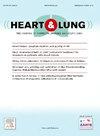Smoking prevalence among stroke patients in Saudi Arabia: A systematic review and meta-analysis
IF 2.6
4区 医学
Q2 CARDIAC & CARDIOVASCULAR SYSTEMS
引用次数: 0
Abstract
Background
Stroke represents a significant global health issue, consistently identified as one of the leading causes of disability and mortality worldwide. Smoking constitutes a major risk factor for stroke development.
Objectives
This study evaluated the prevalence of smoking among stroke patients in Saudi Arabia.
Methods
Embase, Medline, and SCOPUS were systematically searched from inception to December 2024. Data was screened and synthesized following the PRISMA guidelines. Stratified meta-analysis was performed to pool the prevalence of smokers among stroke patients across various provinces of Saudi Arabia.
Results
There were 19,499 stroke patients in 42 included studies; 2695 (14 %) were smokers, and 14,701 were male. The overall pooled prevalence of smoking among stroke patients in Saudi Arabia is 18 % (95 % CI, 14–22 %). The Western and Northern provinces demonstrate the highest percentages of smokers among stroke patients, at 33 % (95 % CI, 21–47 %) and 23 % (95 % CI, 19–27 %), respectively. The sensitivity analysis using leave-one-out methodologies shows that the pooled percentage estimate is robust, with no one research substantially influencing the conclusions. The meta-regression shows no link between smoking prevalence in stroke patients and age (p-value = 0.17). The results of Egger's test (t = 0.74, bias estimate = 0.7109, p-value = 0.4645) indicate no publication bias in this meta-analysis.
Conclusion
Smoking is prevalently high among stroke patients in Saudi Arabia, with significant regional variations. To reduce the impact of smoking on stroke incidence and outcomes, it is essential to implement targeted preventive programs that include integrating smoking cessation into stroke treatment plans and launching public health campaigns.
沙特阿拉伯卒中患者吸烟率:一项系统回顾和荟萃分析
中风是一个重要的全球健康问题,一直被认为是世界范围内导致残疾和死亡的主要原因之一。吸烟是中风的主要危险因素。目的本研究评估沙特阿拉伯脑卒中患者的吸烟率。方法系统检索sembase、Medline和SCOPUS数据库,检索时间为建站至2024年12月。根据PRISMA指南对数据进行筛选和综合。分层荟萃分析汇集了沙特阿拉伯各省中风患者中吸烟者的患病率。结果42项纳入的研究共纳入19499例脑卒中患者;吸烟2695例(14%),男性14701例。沙特阿拉伯卒中患者中吸烟的总流行率为18% (95% CI, 14 - 22%)。西部和北部省份卒中患者中吸烟者的比例最高,分别为33% (95% CI, 21 - 47%)和23% (95% CI, 19 - 27%)。使用“留一”方法的敏感性分析表明,汇总的百分比估计是稳健的,没有一个研究实质性地影响结论。meta回归显示卒中患者吸烟率与年龄无关联(p值= 0.17)。Egger检验结果(t = 0.74,偏倚估计= 0.7109,p值= 0.4645)表明本meta分析无发表偏倚。结论沙特卒中患者吸烟率普遍较高,且存在明显的地区差异。为了减少吸烟对中风发病率和结果的影响,有必要实施有针对性的预防计划,包括将戒烟纳入中风治疗计划和开展公共卫生运动。
本文章由计算机程序翻译,如有差异,请以英文原文为准。
求助全文
约1分钟内获得全文
求助全文
来源期刊

Heart & Lung
医学-呼吸系统
CiteScore
4.60
自引率
3.60%
发文量
184
审稿时长
35 days
期刊介绍:
Heart & Lung: The Journal of Cardiopulmonary and Acute Care, the official publication of The American Association of Heart Failure Nurses, presents original, peer-reviewed articles on techniques, advances, investigations, and observations related to the care of patients with acute and critical illness and patients with chronic cardiac or pulmonary disorders.
The Journal''s acute care articles focus on the care of hospitalized patients, including those in the critical and acute care settings. Because most patients who are hospitalized in acute and critical care settings have chronic conditions, we are also interested in the chronically critically ill, the care of patients with chronic cardiopulmonary disorders, their rehabilitation, and disease prevention. The Journal''s heart failure articles focus on all aspects of the care of patients with this condition. Manuscripts that are relevant to populations across the human lifespan are welcome.
 求助内容:
求助内容: 应助结果提醒方式:
应助结果提醒方式:


